

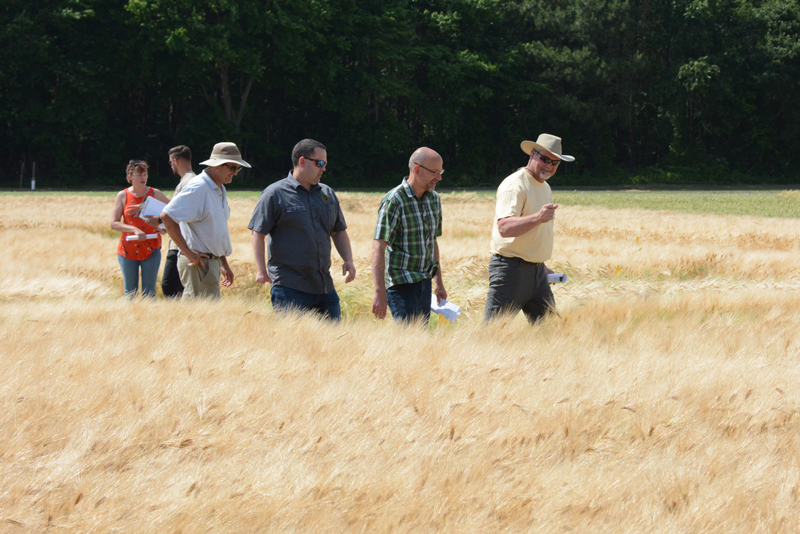
Malt barley in Delaware
Photo by Jamie Taraila and Michele Walfred November 08, 2019
UD’s research on malt barley a conduit for industry and farmers
In real estate parlance, the mantra is “location.” In the food and beverage industry, the trending buzzword is “local.”
For Delaware farmers considering growing a new, alternative crop — malt barley — the perfect word just might be “proximity.” Growing malted barley close to the needs of a new neighbor and industry partner, Proximity Malt Company, could turn out to be lucrative for farmers in the mid-Atlantic region.
University of Delaware College of Agriculture and Natural Resources researchers and Cooperative Extension specialists at the Carvel Research and Education Center, a 347-acre agriculture research station in Georgetown, are examining the viability of growing malt barley in the Delmarva region in order to meet the demand of a thriving craft brewing industry and a strong consumer preference in sourcing local ingredients.
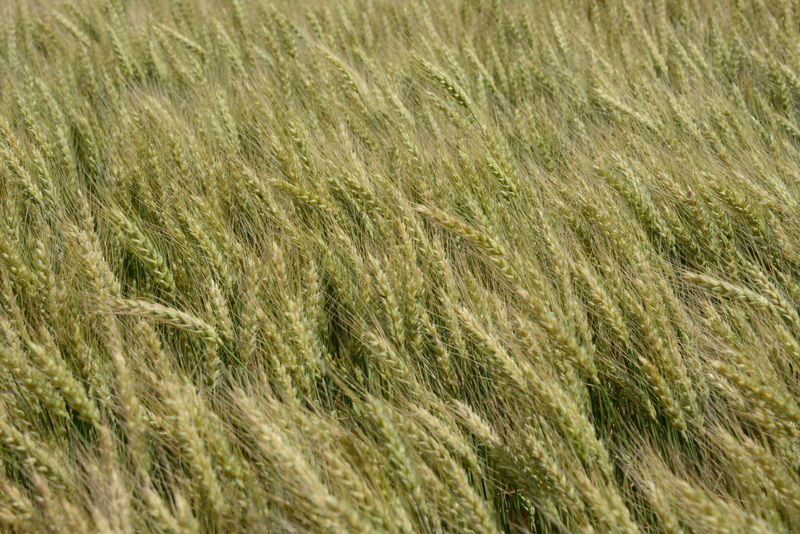
The demand for malt barley across the United States is at an all-time high. Delaware businesses, breweries and distilleries have enjoyed a good portion of the tremendous success occurring across the country.
But, can malt barley perform well in Delaware?
Traditionally, malt barley for the brewing industry is grown in cooler, dryer regions with higher altitudes where it thrives in moderate summer conditions. Colorado, Montana, Idaho, Wisconsin and North Dakota are the leading states in malt barley production.
Delaware has grown barley for years as cattle feed with a low return on investment. Delaware might not be the first state that comes to mind when considering malted barley, but opinions are changing with the arrival of Proximity Malt Company in Laurel, Delaware.
Vic Green, associate scientist for variety testing at the Carvel Center in Georgetown, said growing malt barley as a winter crop could be a good fit for Delaware farmers.
“With Proximity arriving in 2016, there’s been a lot of interest with companies and farmers, as well as breeders growing barley varieties specifically for the malting industry,” Green said. “Winter barley is a perfect fit because you can get double-crop soybeans behind it. You can get two crops from the land in one calendar year. Farmers would prefer to plant barley rather than wheat because it is harvested two weeks earlier, allowing for increased soybean yields.”
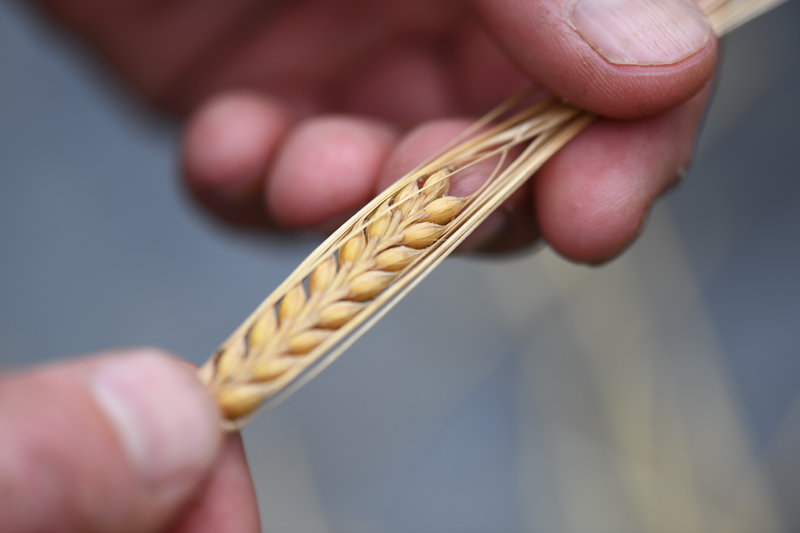
A cereal grain in the grass family, barley is grown for multiple purposes — food products for human consumption, as animal fodder, and as a major ingredient in alcoholic beverages.
For malting purposes, barley varieties grow in either six or two rows on the seed head. However, two-row varieties are the majority of what is currently being evaluated in the malt barley trials.
“Two-row varieties have uniformly plump kernels, which are more efficient in the malting process and result in less waste so they are preferred by the malt house,” said Green. “The winter barley varieties that Proximity is currently looking at are Violetta and Flavia, both of which are two-row varieties.To incentivize Delmarva farmers to plant the grain, Proximity offers contracts well-above the feed grain price, approximately twice as much.”
As its name indicates, Proximity Malt Company is keen to source locally grown barley for what is the first malt house located on the East Coast. Proximity is headquartered in Milwaukee and has a malt house in Colorado.
Proximity’s investment in a full-scale malt house in Laurel at the former Laurel Grain property places their operation close to shipping and transportation infrastructure. Sourcing barley locally fits with Proximity Malt’s sustainable business philosophy to reduce transportation costs and lower the environmental footprint.
Green said that Proximity Malt projects a demand for approximately 1.2 million bushels (or 12 to 15,000 acres) of malted barley to achieve full capacity at its Laurel plant.
According to Matt Musial, maltster and director of quality and safety for Proximity Malt, the company worked with approximately 40 local farmers across 8,000 acres in crop year 2019. Musial would like to see that figure double. The gap in capacity is supplemented with barley imported from states outside the mid-Atlantic region.
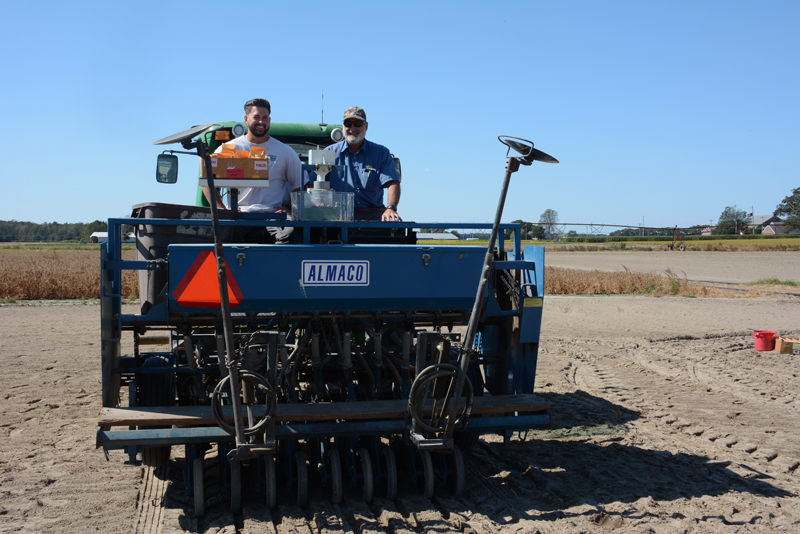
“Delaware’s hot and humid summer season offers complications for the crop, and is why the winter variety is preferred over spring types of barley. It is a challenging crop to grow, but interesting to work with,” Green said. “Weather is everything. It’s everything in agriculture anyway.”
Having experts on site at Carvel’s research farm mitigates the challenges.
The role of UD research
“We are very pleased to be working closely with Proximity Malt to identify barley varieties that are suitable for production in our region,” said Mark Isaacs, director of the Carvel Center. “Our team of state specialists are critical to evaluating the agronomic production issues including variety, fertility, disease and pest management challenges facing our growers with a goal of providing a high-quality barley product for the industry.”
This October, Green and his team planted more than 40 varieties for the 2019-2020 season. UD is one of 26 locations participating in a winter malted barley trial. The study is coordinated by the University of Minnesota and headed by barley breeder Kevin Smith.
“Most breeders who develop barley also work with wheat since they are so similar,” Green said. “Most of the emphasis is upon developing new wheat varieties because it is grown on more acreage and viewed as more important. Developing malt varieties is viewed as a niche crop, and there just a few public breeders left.”
During the evaluation process, UD specialists pay close attention to crop performance and the issues that may affect crop health, yield and quality.
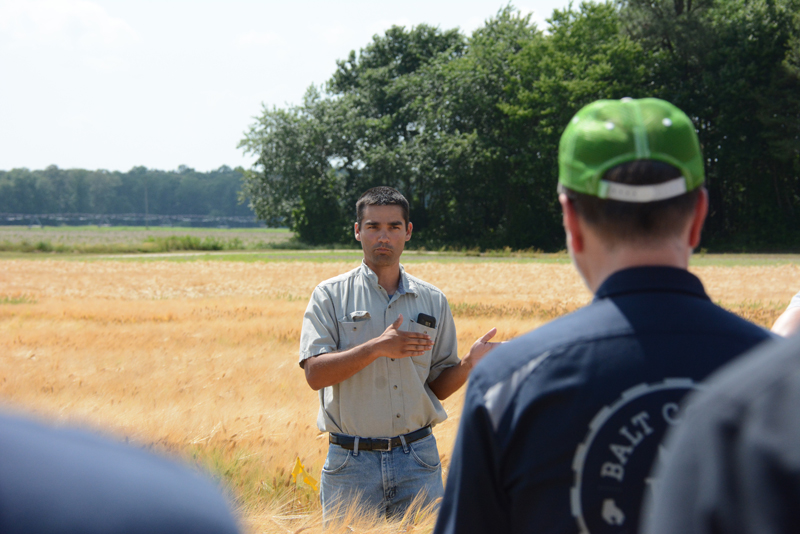
The entomology unit, led by Extension specialist David Owens, compares the insect pest complex of malting barley with wheat.
“In the fall and early spring, the focus is on aphids; as the crop heads out, we start looking for cereal leaf beetles and caterpillars” Owens said. “We want to know when insecticide applications pay off and whether or not insects are going to influence quality.”
Extension plant pathologist Alyssa Koehler advises on the disease thresholds commonly seen in cereal grains. Like wheat, barley is vulnerable to Fusarium head blight (Head Scab), and she makes recommendations on timing of fungicide sprays and which varieties are more favorable in Delaware’s challenging climate.
Green is looking forward to the research conducted by Extension agronomist Jarrod Miller, who will study the relationship between nitrogen applications and the protein ratios in kernels.
“Sussex County’s sandy soils, prone to leaching, require a delicate balance of nitrogen application timing, and rate to minimize environmental risk and also produce a high yield and adequate protein levels,” said Green.“This has not been studied much for this crop in our region. Proximity wants protein content under 12%.”
Miller will examine the soils in Kent County as well.
“When growers deliver malt barley to Proximity, it is graded by U.S. Department of Agriculture standards, measured for moisture content at 13.5% or less and tested for common disease markers, protein levels and foreign materials,” said Musial. “The most important quality we look for is the kernel’s ability to germinate.”
Typically, a farmer will bring a sample of the harvest to test first, a rapid process that ranges from 6 to 20 minutes. Accordingly, a farmer will know if his crop is ready for delivery to Proximity.
“The 2018 trials here looked very good,” Green said “Barley can look great in the field, but you don’t know the quality until it is tested. It can still have disease pressure or fail the quality metrics Proximity is looking for.”

“Crop year 2018 was a tough year for Fusarium Head Blight in wheat, but it was a good year for barley,” Musial remarked. “So, word is out that malted barley is viable, and there is a market for it.”
UD’s trial results are reported back to a handful of barley breeders in the country who rely on feedback in order to identify issues and breed new lines with desirable characteristics. In addition results are published on UD’s Extension website for farmers and industry.
Proximity to resources
Once a harvest of malted barley is accepted by Proximity, the grain begins an eight-day process of malting. The kernels are cleaned and spend two days steeping in water, four days in a germination tank where the kernels grow under carefully controlled conditions. This “modifies” the kernel and develops the enzymes needed for brewing. In the final two days, the kernels are dried to a moisture level of 4% in a process known as kilning.
During the final stage the kernels can be roasted, much like the coffee bean process, to enhance or produce customized flavors that brewers want.
The kernels are packaged and stored and ready for delivery to brewers and distillers.
Musial invites his customers to tour the malting facility and also how and where it is grown. In May 2019, Musial included a visit to Carvel to showcase the supply chain of barley in the field, see the available resources first hand, and meet the UD experts who support the process from planting to harvesting.
“We are trying to highlight the fact that in the mid-Atlantic, right down the road from our plant, is the University of Delaware, which has — what you typically only see out West — a full-fledged research and development of understanding how varieties grow in the mid-Atlantic,” Musial said. “UD has the capability. That is what we are trying to show. Not only is it about Proximity Malt being here, but it is being supported by the local university. We are really excited about the University of Delaware.They’re a great team to work with.”
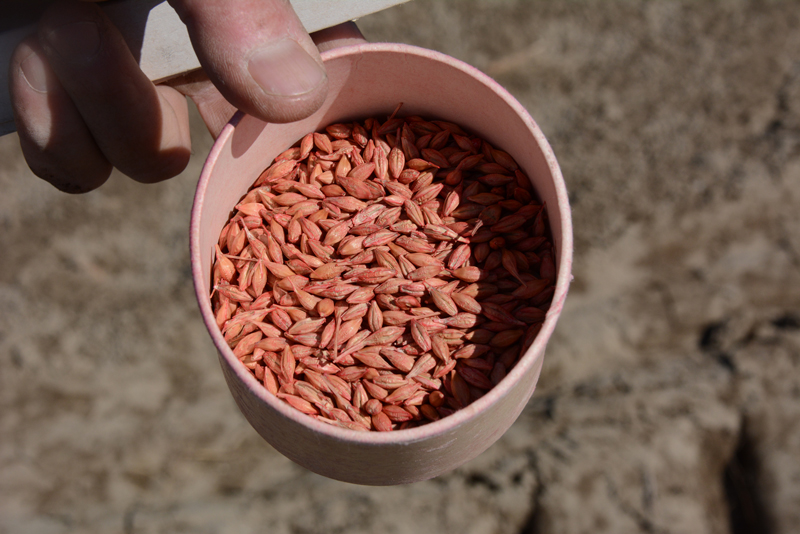
Musial sees the experts based at the Carvel Center and their relationship with area farmers as key.
“So now, we not only have the support of the University, but the local people. We have some of the best farmers I’ve ever met, and we are working with some of the leaders in the agriculture industry. Some who were early adopters, and who’ve come on board and shown they can do well,” Musial said.
Musial added that farmers are planting other crops, such as vegetables, besides soybeans after barley is harvested.
“This isn’t our first time with barley,” Green said. “We’ve looked and looked for ways to get the price up — as a value-added crop, and now with Proximity in the area, growing malt can make a big difference for Delmarva growers.”
Contact Us
Have a UDaily story idea?
Contact us at ocm@udel.edu
Members of the press
Contact us at 302-831-NEWS or visit the Media Relations website

